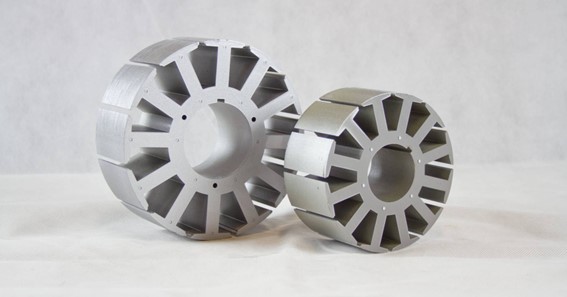Are you curious to know what is stator and rotor? You have come to the right place as I am going to tell you everything about stator and rotor in a very simple explanation. Without further discussion let’s begin to know what is stator and rotor?
What Is Stator And Rotor?
Electric machines, such as motors and generators, play a crucial role in numerous industries and applications, powering everything from household appliances to industrial machinery. Two essential components of these electric machines are the stator and rotor. In this blog post, we will delve into the world of stators and rotors, understanding their functions, structures, and their significance in the operation of electric machines.
The Stator: Static Foundation Of Electric Machines
The stator is the stationary part of an electric machine, providing a stable foundation for the operation of the device. It consists of a core, typically made of laminated iron, and a set of wire windings wound around the core. The stator is responsible for generating a rotating magnetic field that interacts with the rotor to produce mechanical motion or electrical output.
Key Features And Functions Of The Stator:
- Core: The stator core is usually made of stacked, thin iron laminations. These laminations minimize energy losses by reducing eddy currents and magnetic hysteresis, ensuring efficient operation.
- Windings: The wire windings on the stator are typically made of copper or aluminum and are wound in specific configurations. These windings are connected to an external power source, supplying the electrical energy needed for the machine’s operation.
- Magnetic Field Generation: When an alternating current (AC) is passed through the stator windings, it creates a magnetic field that alternates in direction. This rotating magnetic field induces the movement of the rotor, leading to mechanical rotation or electrical generation, depending on the type of machine.
The Rotor: Dynamic Element Enabling Motion
The rotor is the moving part of an electric machine that responds to the magnetic field generated by the stator. It is designed to interact with the stator’s magnetic field, resulting in mechanical motion or electrical output. The rotor can take various forms depending on the type of machine, such as squirrel cage rotors, wound rotors, or permanent magnet rotors.
Key Features And Functions Of The Rotor:
- Core: Similar to the stator, the rotor often consists of a core made of laminated iron to reduce energy losses caused by eddy currents and magnetic hysteresis.
- Conductors: In machines such as induction motors, the rotor contains conductive bars or coils. These conductors interact with the stator’s rotating magnetic field, inducing currents that generate the rotor’s motion.
- Magnetic Field Interaction: The rotor’s conductive elements interact with the rotating magnetic field produced by the stator. This interaction causes the rotor to rotate, converting electrical energy into mechanical energy or vice versa, depending on the type of machine.
Types Of Electric Machines:
- Induction Motors: Induction motors have a squirrel cage rotor, consisting of short-circuited conductive bars embedded within the rotor core. The interaction between the rotating magnetic field of the stator and the currents induced in the rotor conductors causes the rotor to rotate.
- Synchronous Motors: Synchronous motors have a rotor equipped with permanent magnets or windings. The rotor rotates at the same speed as the rotating magnetic field produced by the stator, resulting in precise synchronous motion.
- Generators: In generators, the rotor converts mechanical energy into electrical energy. Depending on the type of generator, the rotor can be a wound rotor or a permanent magnet rotor, where the rotation induces electrical output.
Conclusion:
The stator and rotor are integral components of electric machines, working in tandem to enable their operation. The stator generates a rotating magnetic field, while the rotor responds to this field, resulting in mechanical motion or electrical output. Understanding the functions and structures of these components helps us appreciate the complexity and efficiency of electric machines that power our modern world. Whether it’s the motor in your household appliance or the generator in a power plant, the stator and rotor form the foundation of their operation, harnessing the power of electricity for various applications.
FAQ
What Is The Function Of Stator?
In an electric motor, the stator provides a magnetic field that drives the rotating armature; in a generator, the stator converts the rotating magnetic field to electric current. In fluid powered devices, the stator guides the flow of fluid to or from the rotating part of the system.
What Is Called Stator?
The stator is the coil of wire housed inside the engine case. A magnet on a shaft spins within the stator, creating alternating current (AC). That current travels along fairly heavy gauge wire through the case and into the rectifier/regulator which converts it to DC power, and at a consistent output.
What Is The Function Of Rotor?
Rotors are the moving part in an Alternator that have permanent magnets that move around the Stator’s iron plates to generate an Alternating Current (AC). Rotors require existing motion to function, so only once the engine or turbine is already running will a Rotor work with a Stator to provide a charge.
What Is The Difference Between Rotor And Stator Phase?
The significant difference between the rotor and the stator is that the rotor is the rotating part of the motor whereas the stator is the stationary part of the motor.
I Have Covered All The Following Queries And Topics In The Above Article
What Is Rotor And Stator
What Is Stator And Rotor In Motor
What Is Rotor And Stator In Motor
What Is A Stator And Rotor
What Is The Difference Between Stator And Rotor
Stator And Rotor Function
Difference Between Stator And Rotor In Induction Motor
Stator And Rotor In Ac Generator
What Is Stator Winding
Stator And Rotor Pdf
Rotor And Stator Generator
Stator Motor
What Is Stator And Rotor
What does a stator do in a motor
What is the difference between stator and rotor?
